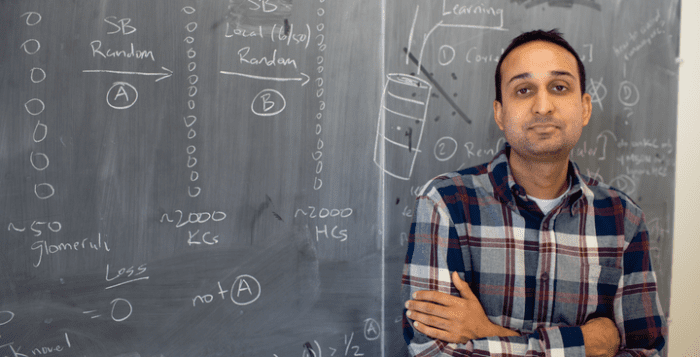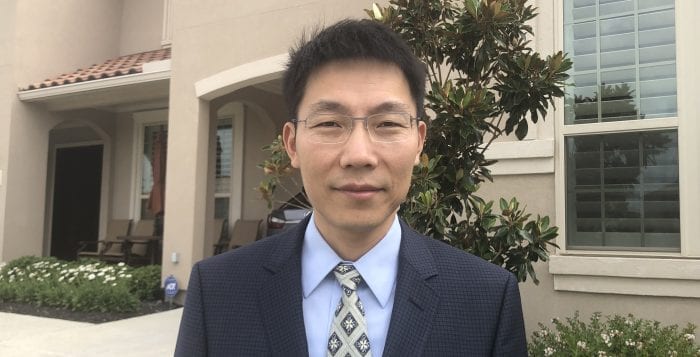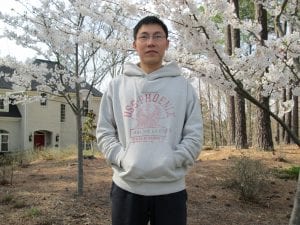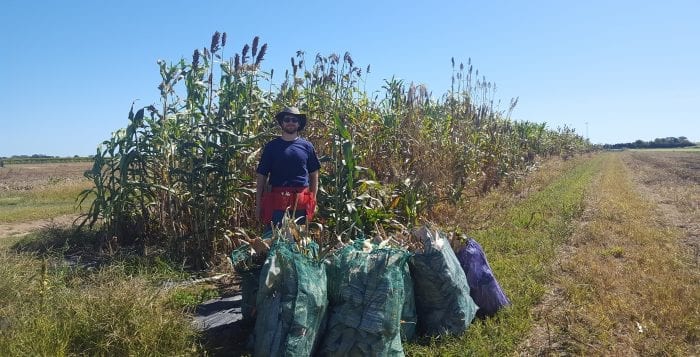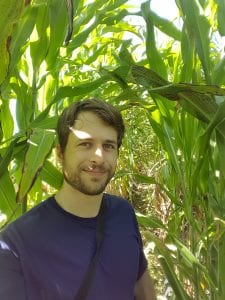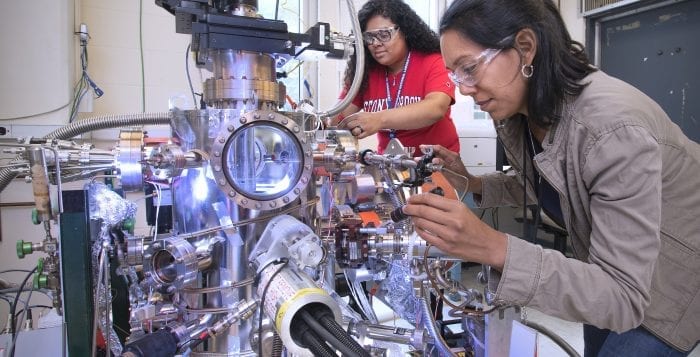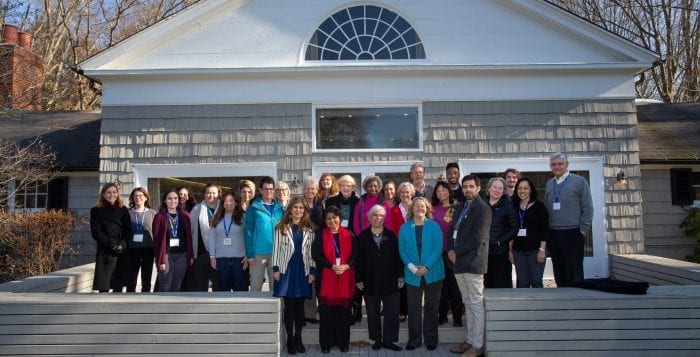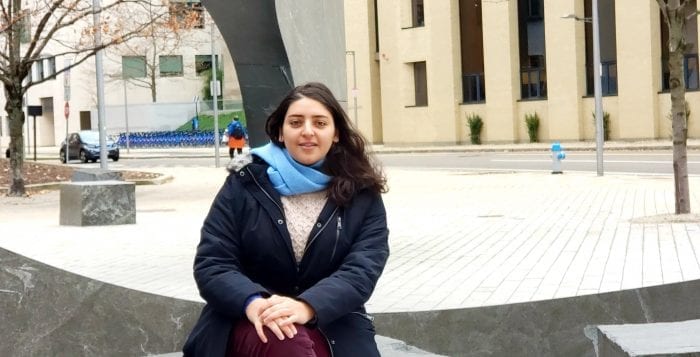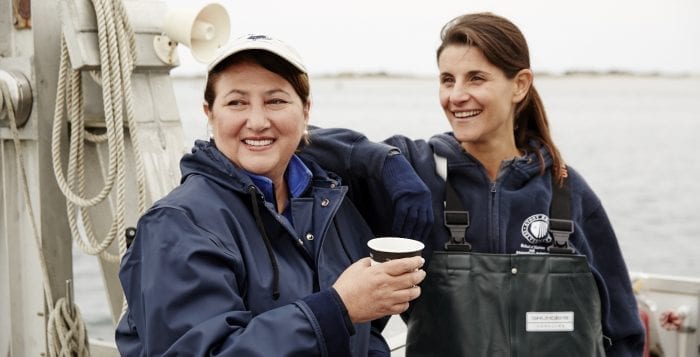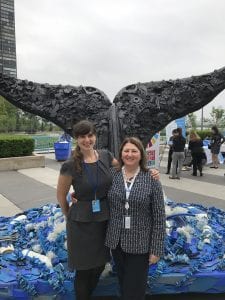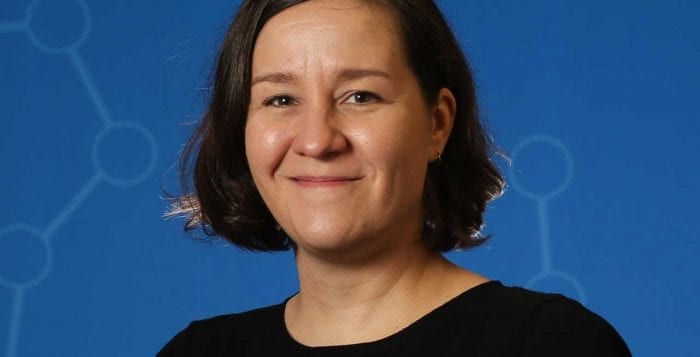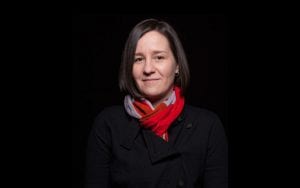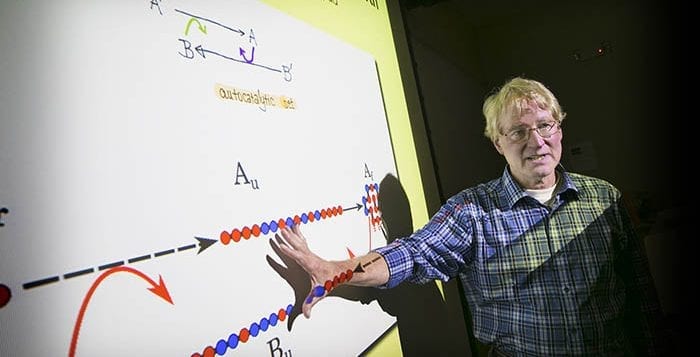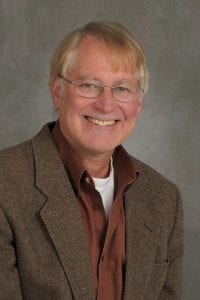By Daniel Dunaief
Just as humans have competing impulses — should we eat or exercise, should we wait outside in the rain to meet a potential date or seek shelter, should we invest in a Spanish tutor or a lacrosse coach — so, too, do plants, albeit not through the same deliberate abstract process.
Working with corn, Dave Jackson, a professor at Cold Spring Harbor Laboratory, has discovered that the gene Gß, (pronounced Gee-Beta,) balances between the competing need to grow and to defend itself against myriad potential threats.
By looking at variations in the gene, Jackson and his postdoctoral fellows, including Qingyu Wu and Fang Xu, have found that some changes in Gß can lead to corn ears with more kernels. The results of this work, which were published in the Proceedings of the National Academy of Sciences last month, suggest that altering this gene may eventually increase the productivity of agricultural crops.
Indeed, the study of this gene included an analysis of why some mutations are lethal. An overactive Gß gene turns the corn brown and kills it. This occurs because the gene cranks up the immune system, causing the plant to attack itself.
Other scientists have found mutations in this gene in plants including arabodopsis and rice.
“We are the first to figure out why the mutations are lethal in corn,” Jackson said. “That’s also true in rice. Rice mutations were made over a decade ago and they also caused the plants to die. Nobody knew why. The main puzzle was solved.”
Dialing back this immune response, however, can encourage the plant to dedicate more resources to growth, although Jackson cautions that the research hasn’t reached the point where scientists or farmers could fine tune the balance between growth and defense.
“We are not there yet,” he said. “That’s what would be possible, based on this knowledge.”
Even in the safer environment of an agricultural field, however, plants can’t abandon all efforts at defense.
“Plants need some defense, but probably much less than if they were growing in the wild,” he said.
By altering the balance toward growth, Jackson is looking at mutations that make more stem cells, which can produce flowers and, eventually kernels. The next steps in this research will not likely include scientists in Jackson’s lab. Qingyu Wu plans to move on to a research position in China.
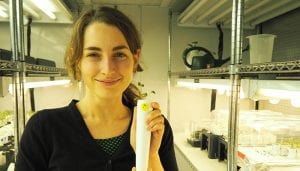
A prolific plant scientist and mentor, Jackson has seen several of his lab members leave CSHL to pursue other opportunities. Recently, he has added three new postdoctoral researchers to his team: Thu Tran, Jae Hyung Lee and Penelope Lindsay.
Jackson plans to use single-cell sequencing in his future research. Using this technique, scientists can find regulatory relationships between genes and monitor cell lineages in development. Jackson described this approach as an “amazing new technology” that’s only been around for a few years. He hopes to use this technique to find new leads into genes that control growth.
Lindsay, who is joining the lab this month, would like to build on her experience as a plant biologist by adding computational expertise. A graduate of the Boyce Thompson Institute in upstate Ithaca, where she was working on the symbiotic relationship between some plants and a specific type of fungi in the soil, Lindsay would also like to work on single-cell sequencing. She plans to continue to study “how specific genotypes produce a phenotype” or how its genes affect what it becomes.
Jackson’s lab’s focus on the undifferentiated cells of the meristem appealed to Lindsay.
Lindsay first met Jackson a few years ago, when he was giving a talk at Cornell University. It was there, fittingly enough, that she had learned about the work that led to the current paper in the Proceedings of the National Academy of Sciences about growth versus defense.
“I was really impressed with the techniques and with the connection to basic research,” Lindsay said. She was excited to learn how Jackson and his students took biochemical approaches to understand how this signaling pathway affected development.
Cold Spring Harbor Laboratory also intrigued Lindsay, who was interested to join a facility that encouraged collaborations among labs.
Born in New York City, Lindsay spent some of her time in upstate New York before moving to Florida, where she also attended college.
Surrounded by family members who have found outlets for their creativity through art — her mother, Michelle Cartaya, is an artist who takes nature photos and her father, Ned Lindsay, remodels homes — she initially attended New College of Florida in Sarasota expecting to pursue a degree in English. Once in college, however, she found excellent scientific mentors, who encouraged her to pursue research.
As a graduate student, Lindsay was greatly intrigued by the signaling pathway between plants and the symbiotic relationship with arbuscular mycorrhizal fungi. During her graduate work, she studied a mutated version of a plant that lacked a signaling protein that encourages this collaboration. When she added considerable amount of the protein to the plant, she expected to restore the symbiosis, but she found the exact opposite.
“The amount of the protein is critical,” she said. “If you have too much, that’s a bad thing. If you don’t have enough, it’s also bad. It’s like Goldilocks.”
A new resident of Huntington, Lindsay, who was a disc jockey for a community radio station in Ithaca and makes electronic music using synthesizers and computers, is looking forward to starting her work at Cold Spring Harbor Laboratory and to living near New York City.
Lindsay continues to find plants fascinating because they “get everything they need” while living in one place their entire lives. “They have so many sophisticated biochemical pathways to protect themselves,” she said.


